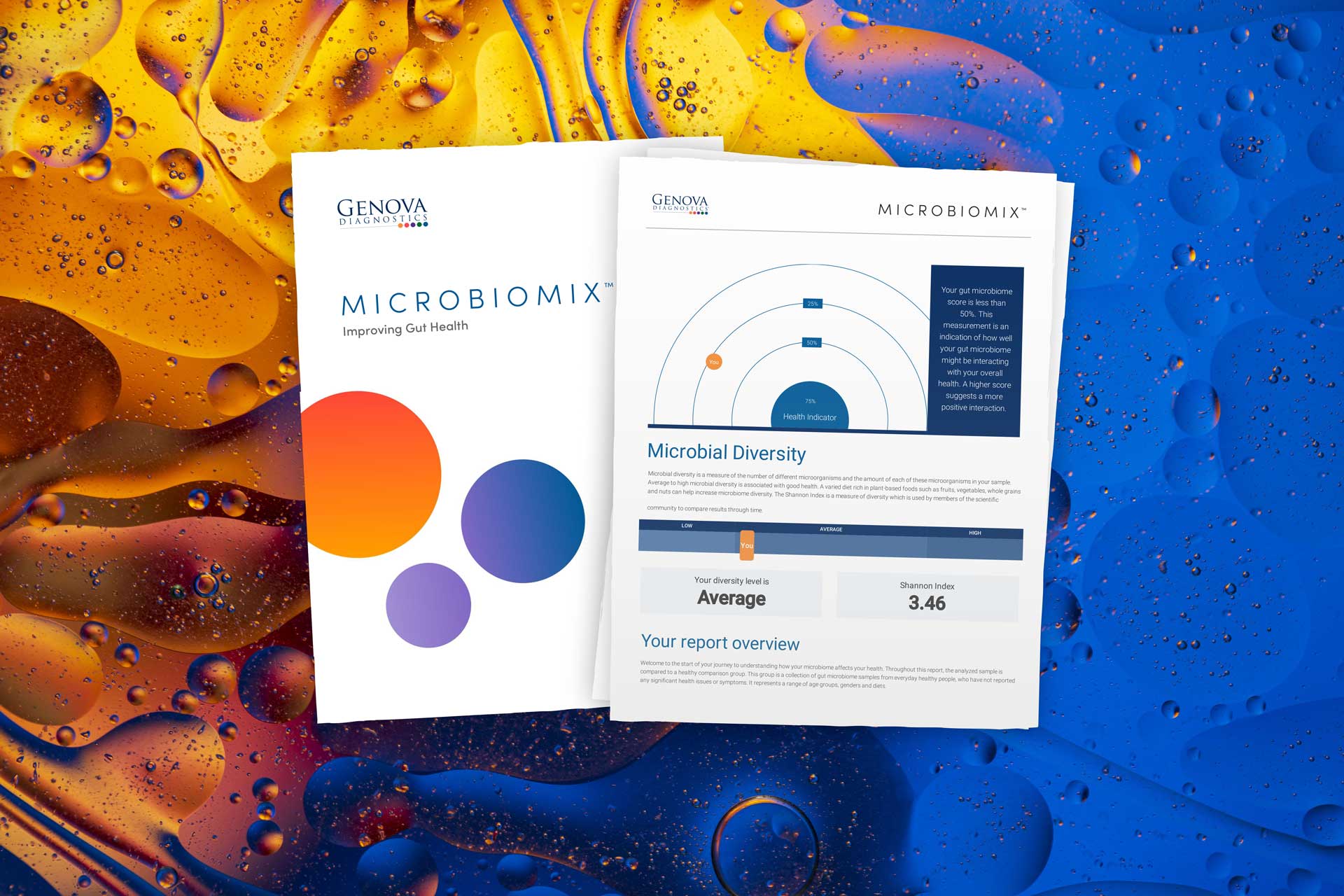We use cookies to enhance your browsing experience and analyze the performance of our website. By clicking Continue, you agree to the use of cookies. For more information, please see our Privacy Policy or update your Cookie Preferences.


In functional medicine, we often talk about the gut microbiome's importance but it's not just who is there that matters. It's what those microbes are capable of doing. Genova's Microbiomix™ test offers a breakthrough view into microbial function, identifying gene-level potential for inflammation, detox disruption, and hormone interference. For clinicians, this functional layer unlocks a deeper level of precision and personalization in gut health assessment.
Traditional stool testing tells us which microbes are present. But Microbiomix uses whole-genome sequencing to reveal the metabolic potential encoded in those microbes' DNA. That means clinicians can detect the potential for disease-driving activity long before symptoms appear.
For example:
A 46-year-old female patient presents with weight gain, fibrocystic breasts, and premenstrual irritability despite clean diet, DIM supplementation, and exercise. A GI Effects test shows moderately high beta-glucuronidase and a Microbiomix confirms high microbial gene expression potential for beta-glucuronidase, suggesting persistent reactivation of estrogens in the gut. This confirms the need for targeted support with calcium D-glucarate and prebiotic modulation.
A 35-year-old male struggles with chronic nasal congestion, skin flushing, and anxiety unresponsive to GABA or adaptogens. Microbiomix reveals high levels of histamine-producing gene pathways in the microbiome. With this insight, the clinician recommends a low-histamine diet, targeted probiotics, and DAO support, resulting in significant symptom improvement.
Chronic inflammation, impaired detoxification, and gut barrier dysfunction are all upstream drivers of age-related disease. Microbiomix offers a new lens to detect these risks early. The difference here is we're not relying on symptoms, but instead the functional potential of the gut microbiome. Clinicians can use this data to reduce inflammatory tone, support detox pathways, and fine-tune the microbiome for long-term resilience.
A 52-year-old executive with no major complaints seeks proactive insight for healthy aging. Microbiomix shows elevated hexa-LPS production potential. Hexa-LPS is a pro-inflammatory compound associated with metabolic endotoxemia and age-related decline. Early intervention with polyphenol-rich foods, gut barrier support, and lifestyle optimization may prevent downstream metabolic damage and inflammation.
GI Effects gives you a detailed picture of current digestion, inflammation, and actual microbial load, helping to answer "yes/no" questions (e.g., Do I have inflammation?). Microbiomix reveals what the microbes in the gut are primed to do. Together, they offer unmatched insight:

Microbiomix analyzes microbial gene activity to reveal the functional potential of the gut microbiome, helping you anticipate clinical risks and tailor targeted interventions. [ Learn More ]

The GI Effects stool test analyzes gut microbiome, digestion, inflammation, and infection markers with the option to also assess the intestinal microbiome. [ Learn More ]
Microbiomix bridges the gap between taxonomy and function, giving practitioners the clarity they need to target root causes with unprecedented precision. Whether you're troubleshooting a resistant case or supporting someone on their longevity path, the combination of GI Effects and Microbiomix provides the most comprehensive map of gut health available today.
This article is for educational purposes only and is not medical advice or a substitute for professional diagnosis or treatment.